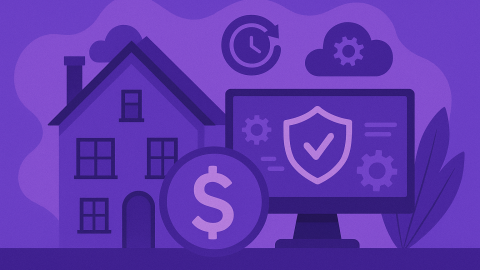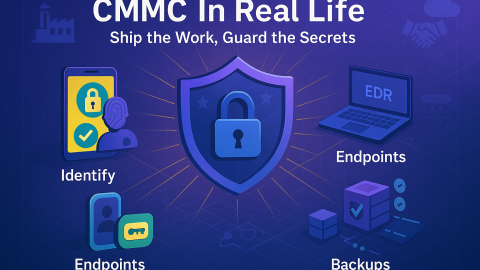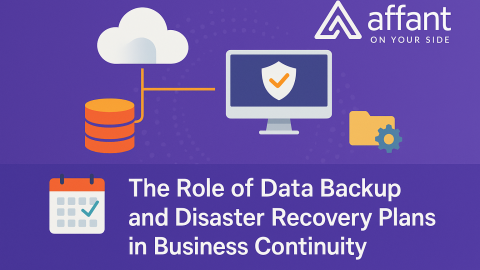In an increasingly digital world, it’s no secret that technology can either make or break a small business. The right tools allow for seamless communication, efficient workflows, and better customer service—all of which boost overall productivity. Yet, many small business owners struggle with selecting and implementing solutions that genuinely add value without unnecessary complexity or cost.
Below, we’ll explore effective ways to leverage IT solutions to help your business thrive. From collaboration tools and process automation to outsourced support and scalable systems, this guide will shed light on practical steps you can take to create a more productive work environment.
1. Embrace Collaboration Tools for Seamless Communication
One of the most straightforward ways to increase efficiency is by ensuring that your team members can share information and ideas without friction. When employees have trouble reaching each other or spend too much time digging through disorganized email chains, productivity takes a hit.
- Centralized Platforms: Tools like Slack, Microsoft Teams, or Google Workspace provide a unified platform for instant messaging, file sharing, and video conferencing. This streamlines communication and allows your staff to find resources easily.
- Real-Time Editing and Feedback: Cloud-based applications such as Google Docs or Office 365 let multiple team members collaborate on the same document in real-time, eliminating the need for endless email attachments and version confusion.
- Project Management: Platforms like Trello, Asana, or Monday.com can help teams visually track tasks, deadlines, and responsibilities. This transparency encourages accountability and keeps everyone aligned on priorities.
By consolidating your collaboration and communication tools, you reduce the potential for miscommunication and wasted effort, enabling everyone to focus on meeting business goals rather than troubleshooting logistical hurdles.
2. Automate Repetitive Tasks and Processes
Automation isn’t just a luxury for large companies; small businesses can also reap considerable benefits from automating routine tasks. By cutting down on time spent on repetitive work, employees can devote more energy to creative problem-solving, customer service, and strategic decision-making.
- Email and Marketing Automation: Platforms like Mailchimp, HubSpot, or ActiveCampaign can help you set up automated email campaigns for lead nurturing, customer follow-ups, or special promotions. These tools track metrics (such as open rates and conversions) to help fine-tune your marketing strategy.
- Financial Management: Accounting software like QuickBooks or Xero can automate invoice creation, payment reminders, and financial reporting. This not only saves time but also reduces the risk of errors and ensures accurate bookkeeping.
- Customer Support: Chatbots and automated ticketing systems can handle simple client inquiries, allowing your team to focus on more complex requests. This improves response times and boosts customer satisfaction.
When you invest in automation, even on a small scale, you’re effectively cutting out manual tasks that eat into your team’s productivity. Over time, these incremental improvements can add up to significant gains in efficiency and output quality.
3. Outsource and Leverage Managed IT Services for Consistent Support
Maintaining stable, secure technology is vital to productivity. However, managing IT internally can be challenging—especially if you don’t have the resources to employ full-time specialists. Turning to a managed IT services provider can solve this issue while also offering the added benefit of guidance from experts who stay updated on the latest tech trends.
- 24/7 Monitoring and Support: Outsourcing ensures your network and critical systems are constantly monitored, minimizing downtime that disrupts employee workflows. If an issue arises after hours, it can be addressed quickly, keeping your operations running smoothly.
- Scalable Solutions: As your business expands, your IT demands will inevitably change. A managed service provider can add new capabilities and services as needed—offering you access to cutting-edge hardware and software without significant up-front investment.
- Cost Savings: Outsourcing can transform unpredictable IT expenses into a more manageable monthly fee. Instead of hiring multiple full-time employees, you pay for precisely the level of support and expertise your business requires.
Outsourcing certain IT functions lets you focus on strategic areas like marketing, product development, and customer engagement, rather than grappling with the challenges of in-house technical support.
4. Prioritize Data Security and Backup Solutions
In the digital age, data breaches and cyberattacks are a very real threat to businesses of all sizes. Not only can cyber incidents lead to costly downtime, but they can also erode customer trust if sensitive information is compromised. By implementing reliable security measures and backup strategies, you minimize the risk of disruptions that can stall productivity.
- Firewall and Antivirus Software: A robust firewall combined with reputable antivirus software helps prevent unauthorized access and infections that can cripple your network.
- Regular Security Audits: Periodic vulnerability assessments and compliance checks can reveal system weak points. This allows you to address potential security issues before they escalate.
- Automated Backups: Use solutions that automatically back up your data to secure offsite or cloud-based locations. This precaution ensures that even in the event of a cyberattack or hardware failure, essential files and data remain accessible, allowing your team to get back on track with minimal downtime.
While security might not be the first thing that comes to mind when thinking about productivity, a secure environment is essential for maintaining steady workflows. If you’re constantly dealing with malware or data loss, your team’s efforts will inevitably be disrupted.
5. Integrate Mobile and Remote Work Options
The modern workforce is no longer confined to a single physical location. Offering employees flexible work arrangements—whether fully remote or partially hybrid—can significantly boost productivity and morale. With the right tools, your team can stay connected and effective no matter where they’re located.
- Cloud-Based Services: Hosting systems and data in the cloud allows employees to access resources from any device with an internet connection. This flexibility encourages a more dynamic and responsive workflow.
- Virtual Private Networks (VPNs): If your staff needs secure access to company systems, a VPN can help maintain data protection while enabling remote collaboration.
- Mobile Productivity Apps: Tools like Evernote, Google Drive, or Microsoft Office Mobile ensure employees can capture ideas, edit documents, or share files while on the go, further fostering a culture of continuous collaboration.
By embracing a remote-friendly approach, you not only expand your talent pool but also empower current team members to achieve better work-life balance—an essential factor in long-term productivity.
6. Establish Clear Metrics and Reporting
Investing in technology is only the first step. To truly gauge the impact on your business, you need to track relevant metrics and analyze performance data. When everyone understands what success looks like, they can optimize their use of tech tools to meet or surpass these goals.
- Key Performance Indicators (KPIs): Identify which KPIs matter most to your business—whether it’s sales growth, customer satisfaction, or project completion rates—and use reporting features within your tools to measure progress.
- Regular Team Check-Ins: Schedule routine meetings to review these metrics, identify roadblocks, and celebrate improvements. Tools such as analytics dashboards or project management software can help visualize data for more insightful discussions.
- Continuous Improvement Culture: Encourage employees to suggest enhancements or share best practices. This inclusive approach maximizes the return on investment in your IT solutions by tapping into collective expertise.
Aligning Technology with Long-Term Business Goals
No matter the size of your operation, the goal of technology should always be to help you work smarter, not harder. By adopting collaboration tools, automating routine tasks, outsourcing strategic IT services, and maintaining a strong security posture, small businesses can create an environment where productivity naturally flourishes. The key is selecting the technologies and support structures that align with both your immediate tasks and your long-term objectives.
If you’re new to adopting these solutions, it may feel daunting at first. However, you don’t have to face the challenge alone. Many IT service providers specialize in helping businesses implement user-friendly systems and refine their digital strategies. Consulting with professionals can help clarify which tools and processes will yield the best results for your specific needs, ensuring that every technology you bring on board serves a clear purpose.
In the end, boosting productivity with IT solutions is about more than just the tools themselves. It’s about fostering a culture of efficiency, collaboration, and continuous improvement—qualities that will benefit your organization well beyond your next software purchase. By taking a strategic approach to technology, you’ll be able to optimize resources, reduce operational friction, and ultimately channel your energy into growing the aspects of your business that truly set you apart in the marketplace.











